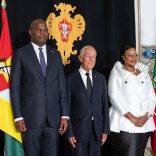Mozambique: Government approves €190m rainy season plan, €81m currently available
World Bank on Mozambique’s birth rate: Making the most of demographic change – Economic Update

Picture: Courtesy of the World Bank
The General Census of Population and Housing conducted from 1 to 15 August last year determined that there are 28.8 million Mozambicans, just 8 million more than the 20.5 million registered in 2007. In 1997, the Mozambican population was estimated to be around of 16.1 million.
According to the figures, more than 50 percent of the population is young, and the birth rate shows signs of exponential growth, so that in 2025 Mozambique is expected to be home to 33.2 million people.
It is in the face of this reality, and associated with the fact that the Mozambican economy remains supported on and dependent on the exploitation of natural resources, that the World Bank (WB) sees the need to transform the growing and young population demographic into a dividend for future growth as an increasingly urgent challenge.
However, despite this opportunity, the World Bank’s latest Economic Update on the country released on December has not shrunk from calling for the Mozambican authorities to begin to think seriously about strategies to reduce the birth rate.
“Transforming Mozambique’s population trends into a demographic dividend is an immense challenge, but so are the potential gains,” said Peter Holland, World Bank Program Leader for Human Development.
Helping fertility levels to fall faster, the analysis adds, is crucial to raising real GDP per capita by 31 percent by 2050. “Our analysis estimates that reducing fertility levels would represent an enormous boost: an estimated increase in real per capita GDP of 31 percent by 2050.”
To achieve this and turn the demographic challenge into an economic opportunity, “Mozambique needs to actively promote policies that would trigger a transition for women—job opportunities, better family planning services, and delaying the onset of early marriage.” it says.
But it also advocates “a sharper focus on building skills for youth, with particular emphasis again on women and an economy that grows whilst generating productive jobs for the next generation of Mozambicans.”
By 2011, Mozambique’s total fertility rate was estimated at 5.9 children per woman on average—one of the highest rates in the world.
The situation becomes even more complicated given that the average of 5.9 children per woman is even higher among the extremely poor population, which in itself has potential for perpetuating poverty levels.
Read the full Word Bank report here












Leave a Reply
Be the First to Comment!
You must be logged in to post a comment.
You must be logged in to post a comment.